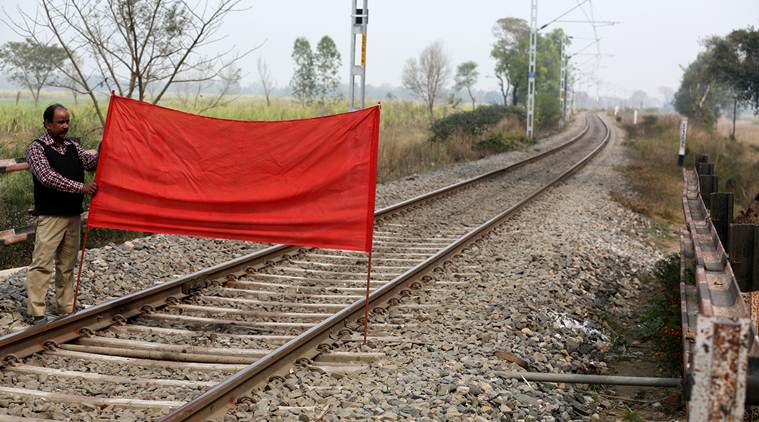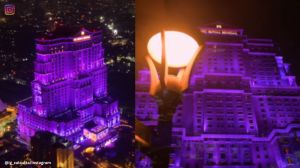- India
- International
All lines clear: ‘Trains from stations close by arrive quickly, I have to be very cautious’
Nearly five years after the accident, the level crossing has gates, built in 2016, and cabin for its two gatemen. Two houses are also being constructed for them.
 Krishna Kumar Chauhan says villagers of the area are supportive and do not create trouble at the crossing. (Express photo by Vishal Srivastav)
Krishna Kumar Chauhan says villagers of the area are supportive and do not create trouble at the crossing. (Express photo by Vishal Srivastav)
Surya Bhan, 50, remembers the events of May 9, 2014, very clearly. “Bodies were scattered on both sides of the tracks,” he says, walking around the railway crossing No. 23-C in Banni Dhala in Uttar Pradesh’s Maharajganj district.
That day a Bolero car had dashed into the engine of the Gorakhpur-Narkatiaganj passenger train, killing 14 people.
Read | All lines clear: Ground reality of unmanned railway crossings
“At the time, there were no barricades or gates here. We had arranged a tractor trolley to carry the bodies from the tracks,” says Bhan, leaning against his motorcycle parked at the crossing.
Nearly five years after the accident, the level crossing has gates, built in 2016, and cabin for its two gatemen. Two houses are also being constructed for them.

“Construction started a year after the accident, and it took another 12 months for it to be built. The good thing was that eventually we got a crossing with strong barricades,” he says.
Read | ‘If train delayed, commuters force me to open gates’
Around 8 am, gateman Krishna Kumar Chauhan, arrives for his 12-hour shift. With no trains set to cross for the next few hours, the 45-year-old settles down with a cup of tea and a Hindi newspaper. “There isn’t much traffic here. Around 30 trains, most of them goods train, pass through this crossing in a day,” he says, sitting in his freshly painted cabin, flower pots lining the premises.
Though Chauhan, a resident of Basti district, says he doesn’t know much about the 2014 accident, since he joined last year in July, he admits “gatemen have to be cautious”. “Ghughli Railway Station is only 3 km from here. The trains from the station arrive at the crossing in about three-four minutes after I get a call from the station master. Trains from Siswa Bazar Railway Station, situated around 8 km away, also don’t take much time,” he says. “If I ever have to relieve myself, I call the station master and ask if I have enough time to take a 10- minute break.”
The crossing is mostly used by sugarcane and mustard farmers from nearby villages, and schoolchildren passing by on their bicycles.
Unlike the news he hears from other level crossings, says Chauhan, people in Maharjganj have been “supportive”. “When there is an emergency and I need to leave the crossing, I ask a local to man the gates. They know the process of closing and opening the gates. It doesn’t happen often, but it helps me,” he smiles.
Best of Express
Apr 18: Latest News
- 01
- 02
- 03
- 04
- 05






































